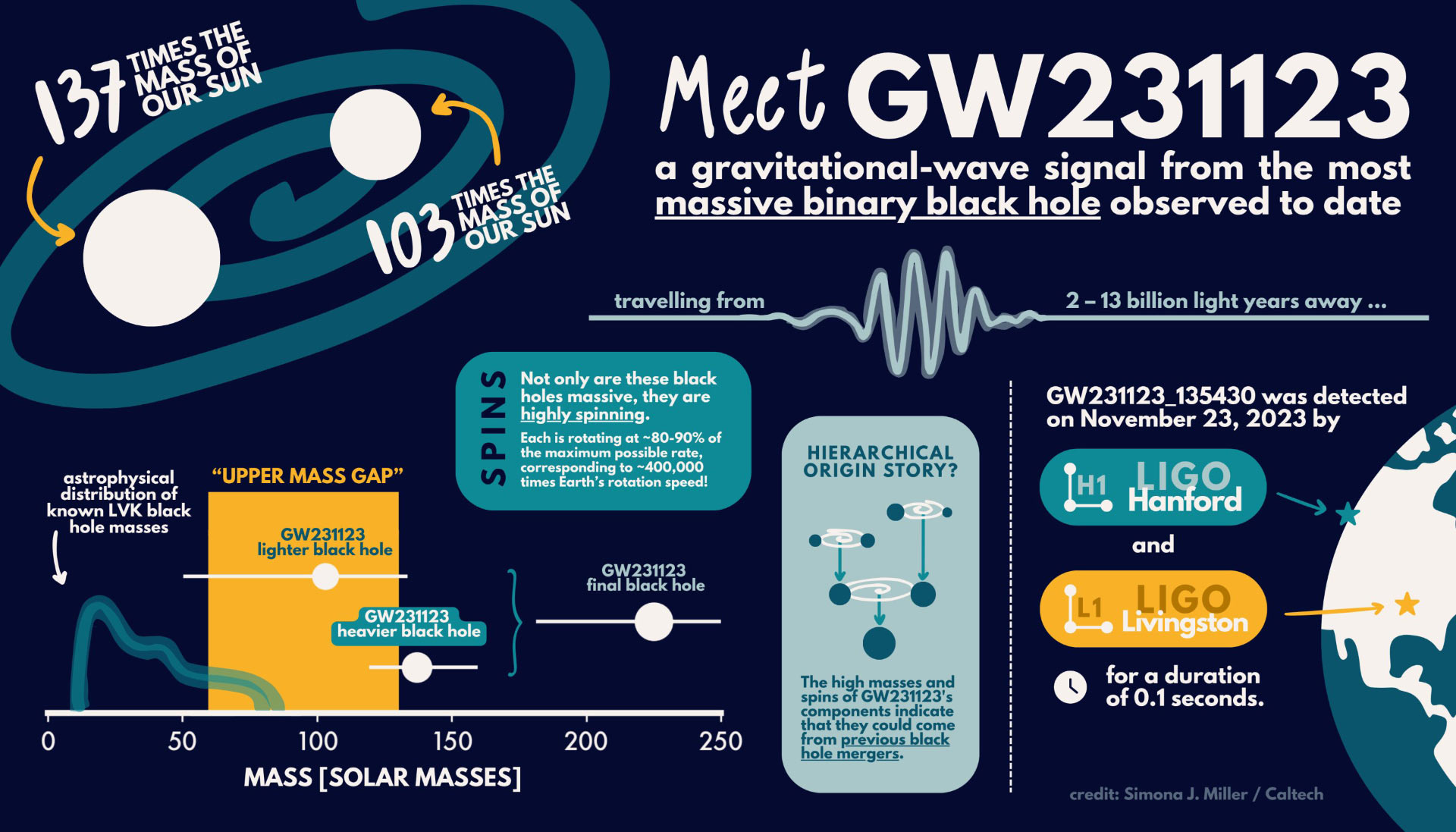Context:
An international network of gravitational wave observatories has reported the detection of the most massive black hole merger ever recorded. The event, named GW231123, involved the collision of two exceptionally massive black holes—one around 140 times the mass of the Sun and the other approximately 100 times the Sun’s mass. The merger resulted in a new black hole with an estimated mass of 225 solar masses.
- The discovery was made by the LVK network, a global collaboration comprising, LIGO USA, Virgo – Italy, KAGRA – Japan. India is building its own observatory, LIGO-India, which will significantly enhance the precision and geographic reach of the LVK network.
Gravitational Waves and Their Importance:
- Gravitational waves are ripples in space-time caused by extremely violent cosmic events.
- Predicted by Einstein's General Theory of Relativity in 1915, they were first detected in 2015 by LIGO, leading to a Nobel Prize in Physics in 2017.
- These waves allow scientists to study astronomical events that are invisible through conventional telescopes, such as black hole and neutron star mergers.

Details of the GW231123 Event:
- Masses Involved:
- Black Hole 1: ~140 solar masses
- Black Hole 2: ~100 solar masses
- Final Black Hole: ~225 solar masses
- Spin Rate: Both black holes were spinning at extremely high speeds, indicating a dynamic and complex formation history.
- Signal Duration: The entire merger lasted only 0.1 seconds, making it a brief but intense event.
- Distance: The event took place billions of light years away—we are observing a phenomenon that occurred in the distant past.
Why GW231123 Is Significant:
1. First Clear Detection of Intermediate-Mass Black Holes
- Stellar black holes typically remain under 60 solar masses.
- This event confirms the existence of intermediate-mass black holes (100–140 solar masses)—a rare and poorly understood class.
2. Hierarchical Merger Theory Supported
- These massive black holes may have formed through multiple earlier mergers of smaller black holes, known as hierarchical mergers.
- This suggests a possible mechanism for forming supermassive black holes at galactic centers.
3. Challenges Current Formation Models
- According to current models, black holes in the 65–120 solar mass range should not form due to pair-instability supernovae.
- The existence of black holes in this range defies standard stellar evolution theories, suggesting the need for revised models or new formation mechanisms.
4. Confirms Einstein's Theory, but Stretches Its Limits
- The gravitational wave matched General Relativity’s predictions, but such extreme events push the theory into uncharted territory, opening room for new physics.
Broader Implications:
- Astrophysics: Offers new insight into the environments (like dense star clusters) where such massive mergers occur.
- Cosmology: Improves understanding of black hole population and their role in cosmic evolution.
- Gravitational Wave Science: Reinforces the need for global cooperation and new detectors like LIGO-India to localize and study rare events.
- Future Research: May lead to advances in particle physics, gravity, and cosmology, especially if similar events are found to be more common than previously thought.
Conclusion:
GW231123 is a landmark discovery that confirms the existence of intermediate-mass black holes, challenges existing theories of black hole formation, and demonstrates the power of global collaboration in gravitational wave astronomy. As instruments like LIGO-India join the network, such detections will deepen our understanding of the universe’s most extreme phenomena.






